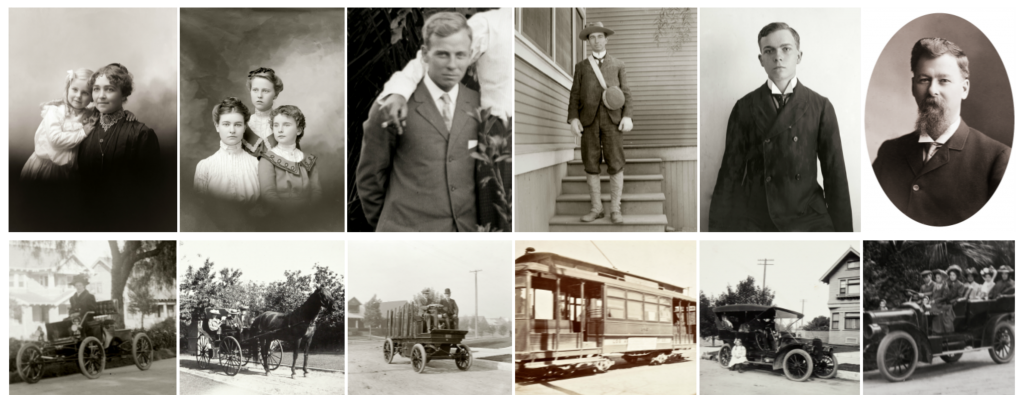The Life and Times of the Alonzo Smith Family
Reuben Stanley Smith, founder of Smith Precision Products Company in 1938, was one of seven children born to Alonzo and Sarah Smith. Reuben’s engineering career has been highlighted this year with several articles posted on this website. These can be accessed by clicking on Recent News Posts or News Archives listed to the right. The following article is a pictorial glimpse into Reuben Stanley Smith’s family around the turn of the century.
The Life and Times of the Alonzo Smith Family
An Amazing Find
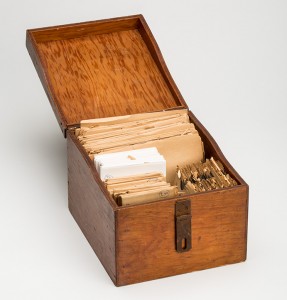
Not too long ago, four wooden boxes tucked deeply inside of a closet were found at the home of Lawrence and Jeanne Smith. Lawrence passed away in 2000 and Jeanne in 2010. Lawrence was Reuben Stanley Smith’s son and President of Smith Precision Products Company from 1948 to 1985. The boxes were very old and antiques in their own right. But it was the contents these boxes held that told an amazing story about the Alonzo F. Smith family. Alonzo was the father of Reuben Stanley Smith, founder of Smith Precision Products Company (1938).
Inside the boxes were three hundred glass plate negatives, each inside envelopes. Nearly every envelope recorded the date, subject matter, weather conditions, camera attachment used, and the chemical exposure method employed. To backtrack a bit, over one hundred years ago, cameras recorded an image on a glass plate in the form of a negative. Chemicals were used to expose the negative image onto a glass plate. This was then used if a paper photograph was required to produce a positive image. Glass plate negatives of any image are quite rare as they are very fragile. This was the preferred method of taking photographs from about 1890 through 1915.
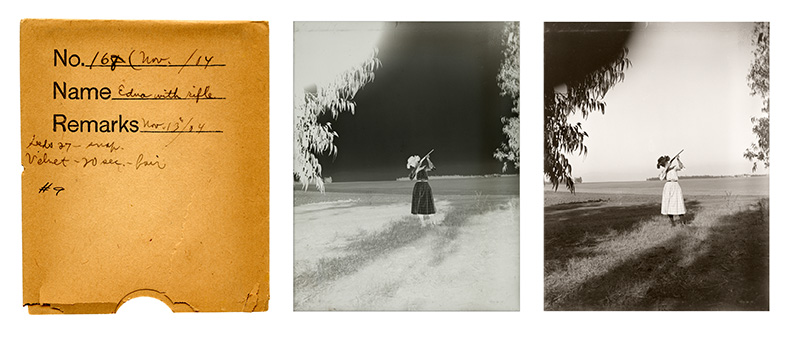
All three hundred glass plate negatives were digitized and a master list produced. These images came alive to tell the story of the Alonzo F. Smith family between the years 1890 and 1915.
The Story Begins
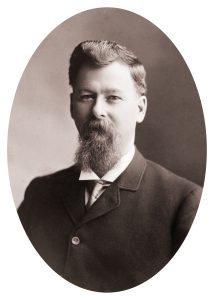
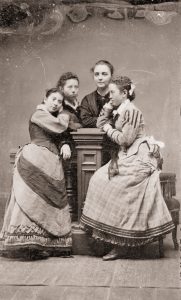
Alonzo F. Smith was born on May 5, 1850. He was one of nine children born to Charles J. Smith and Mercy Smith (Johnson). Alonzo had two older sisters, Sarah (1846) and Mary (1848), three younger sisters, Florence (1852), Martha (1854), and Annie (1856), and three younger brothers, Arthur (1859), Charles (1861), and George (1863).
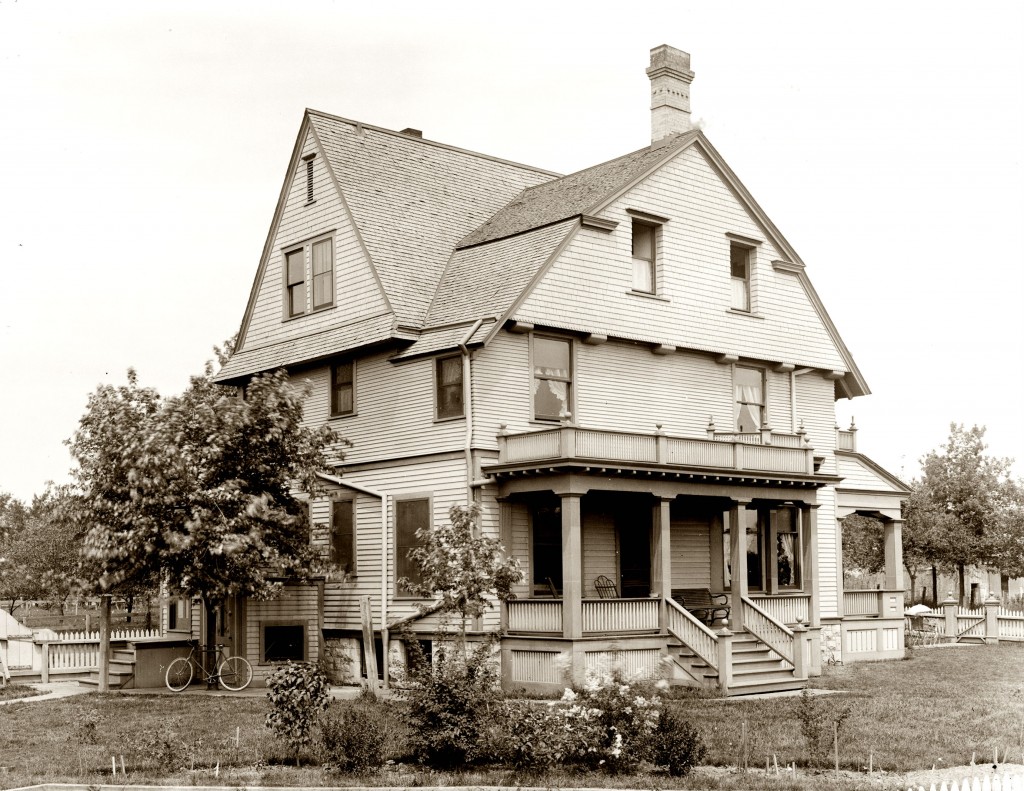
The earliest published record of Alonzo’s profession is that of a carpenter in 1877, as listed in the Milwaukee City Directory. In the same city directory, he is shown as a pattern maker in 1886. We know he worked with his father for a brief period of time who was manufacturing components for baby buggies and later bicycles. Small parts were being made of pressed steel and some were made from castings. More than likely, Alonzo learned the patternmaker trade from his father and used those skills to help the family business. But everything changed for Alonzo around 1886.
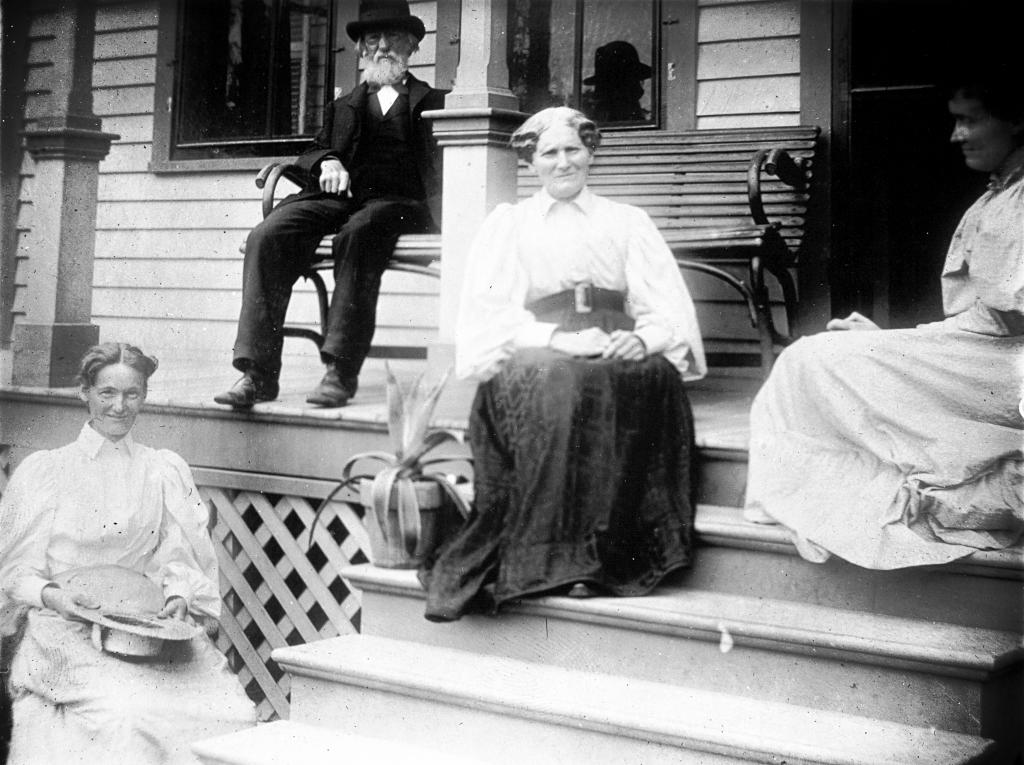
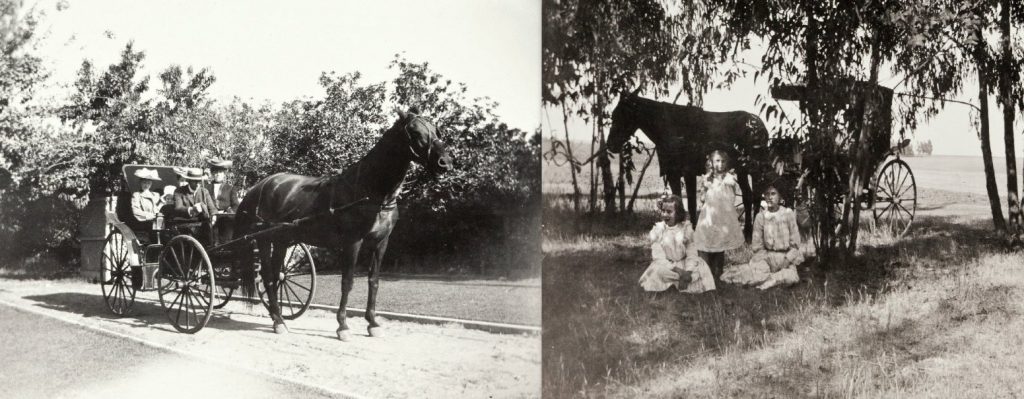
The Alonzo F. Smith Family
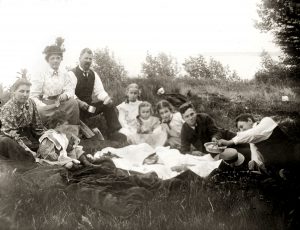
By 1886, Alonzo and his wife Sarah Smith (Watrous) had four children, Walter (1877), Elroy (1880), Reuben (1882), and Irene (1885). Edna (1889), Rosalind (1894), and Phoebe (1899) would come later. Alonzo filed a patent for a very unique instructive toy in 1886 and he called it a Spelling Board. The board was designed with circular letters (56 in all) that could slide around a grooved series of tracks, eventually ending up in the middle track to spell a word or series of words. Before a letter could be slid into the middle track, however, Alonzo designed a simple method to stop the letter so it could be rotated and properly aligned. This not only aligned the letter properly but also gave the child using the board a pause to stop and make certain the correct letter was about to be slid into the middle track.
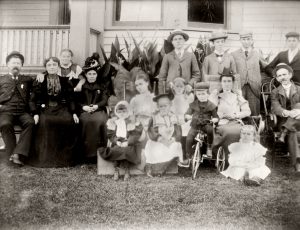
Another board followed the spelling board in short order and was designed in the same fashion. This board was called a Cardinal Number Board. This instructive toy allowed a child to learn arithmetic and contained numbers instead of letters. The Spelling Board was eloquently decorated in red scrolls with the letters in black with red background. The Cardinal Number Board utilized blue scrolls with the numbers and symbols in black with blue background. Alonzo began manufacturing these boards shortly after the patent was granted on February 16, 1886.
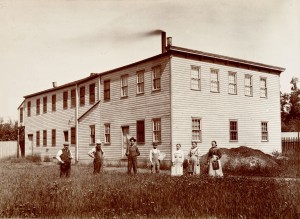
The Instructive Toy Company
The Instructive Toy Company was established in Milwaukee in 1887 to manufacture the boards. Alonzo’s sister-in-law, Mary Viola Andrus (Watrous), was the Secretary of the company. To help with business matters and marketing of the boards, Mr. H. Penner was named the President. Alonzo managed the business. The company was located at 991-993 N. Pierce St., Milwaukee, Wisconsin.
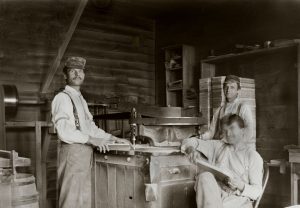
Although we do not know in what year this occurred, the Instructive Toy Company entered into an exclusive arrangement with Selchow & Righter to market and sell the boards under their name. This agreement lasted at least through 1923. During that entire time, Selchow & Righter sold individual boards for $1.00 with various discounts allowed for quantity purchases. Selchow & Righter marketed the board as the “Universal Spelling Board.”
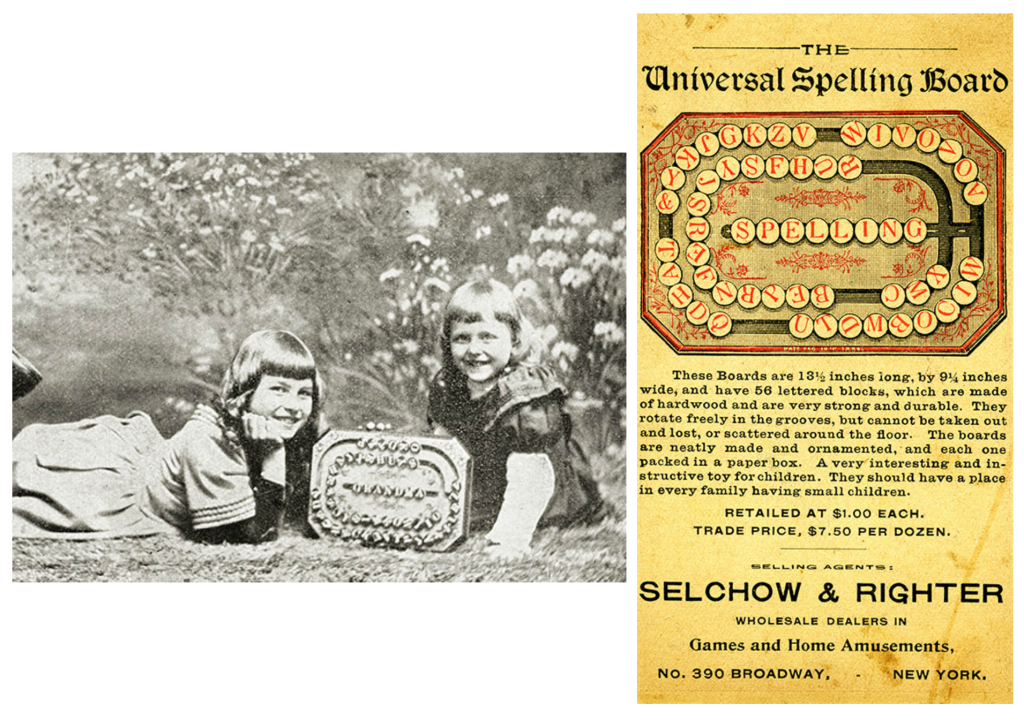
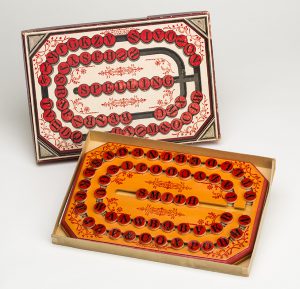
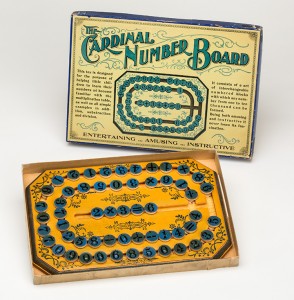
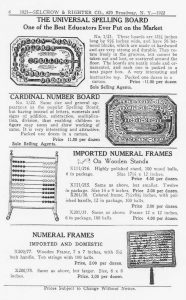
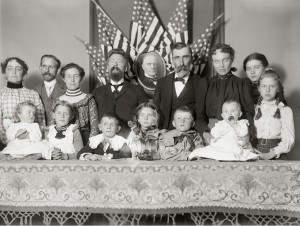
Alonzo had a hard time keeping up with the demand and continued to expand his wood shop. He was granted two additional patents following the board patent for a Spelling Stick and a Puzzle Card Case. His business in the 1890’s was strong and the family prospered.
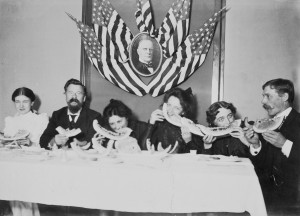
We don’t know why, but in 1900, Alonzo moved his family to Los Angeles, California, leaving son Elroy behind to finish law school at the University of Wisconsin at Madison. Elroy would join his family in Los Angeles after graduating from law school in 1901, then business school at Brownsberger Business College in 1902, and begin his law practice there once he arrived with Messrs. Bernard Potter and Frank James, at No. 629 in the Douglas Building in downtown Los Angeles. Elroy was admitted by the Supreme Court April, 1902; by U.S. District and Circuit Courts, Los Angeles, July, 1907. He was a member of the Knights of Pythias and secretary of the Pythias Association of Los Angeles County.
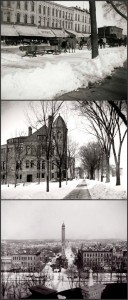
Elroy W. Smith-Photographer Extraordinaire
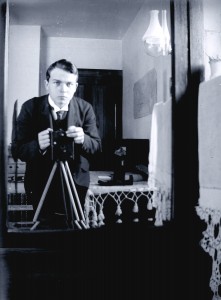
Elroy took many of the glass plate negatives. He was meticulous in detail as evidenced by what he recorded on the glass plate negative envelopes and also in the subject matter of his photos. The other glass plate negatives were taken by Elroy’s brother Reuben. Reuben was even more meticulous as he went so far as to record why a glass plate negative was blurred or simply did not come out right. Glass plate negatives that did not “come out right” were labeled “spoiled.” Some were labeled “forgot close-up attachment.”
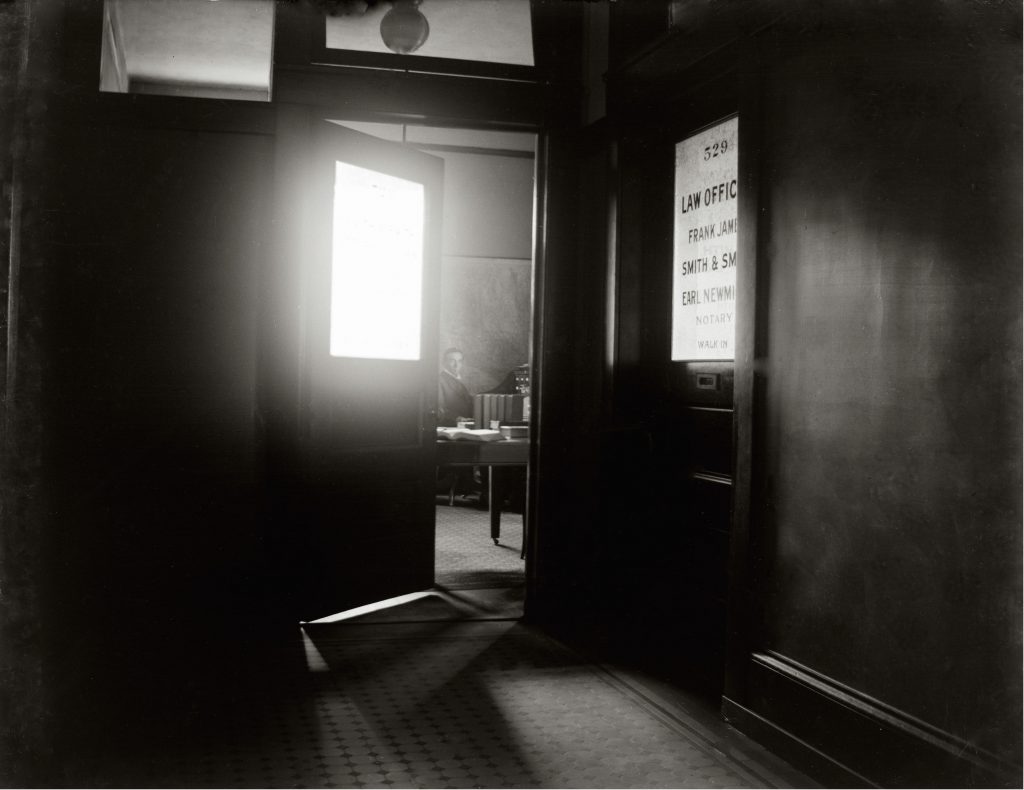
The Young Lawyers-Walter and Elroy
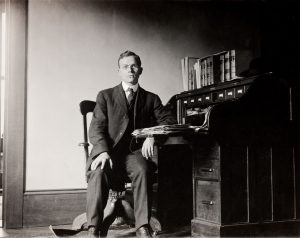
In 1905, Elroy joined his older brother Walter, and previous partner Mr. Frank James. While Mr. James operated out of the same offices, the Smith & Smith law practice was formed at 529 in the Douglas Building, downtown Los Angeles. The photograph at the end of this article is the last known photograph of Elroy W. Smith taken in 1910. He passed away in 1911 at the age of thirty years.
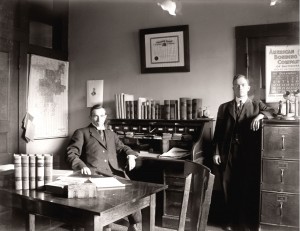
Walter graduated from law school at the University of Southern California, Los Angeles, in 1903. While his relationship with his law partner Mr. Frank James was a long one, we do not know what firm Walter was associated with from 1923 until he passed away in the mid 1950’s. Walter did, however, specialize in real estate matters. He was a member of the esteemed USC Law School “50 Year Club”. He also took many hikes into the mountains north of Los Angeles and loved the outdoors. On or about 1912, he was married. Mable and Walter lived long and productive lives, both passing away in the 1950’s.
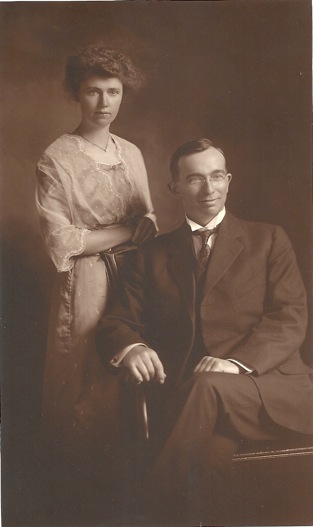
Turn Of The Century-Los Angeles, California
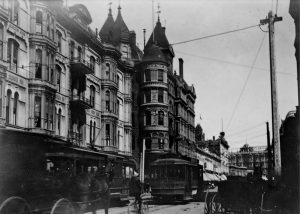
Back to around the time Alonzo moved his family to Los Angeles at the turn of the century, the family’s first house was rented and on Jefferson Street. Alonzo and Sarah then purchased an old run down farm house next to a grassy area called South Park. South Park was adjacent to a peach tree orchard and it is not clear if the family may have been farming this orchard.
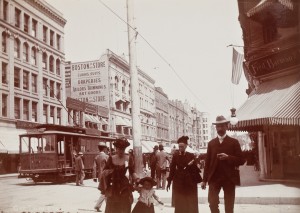
Alonzo and Sarah renovated this house, and built a larger one shortly thereafter on Hill Street in 1906. The Hill Street house was much larger and included a tennis court. This house also had the convenience of a telephone. The Hill Street house also contained a rather large yard which was fenced off from the street. This is where the family’s youngest two sisters, Rosalind and Phoebe, spent countless hours playing.
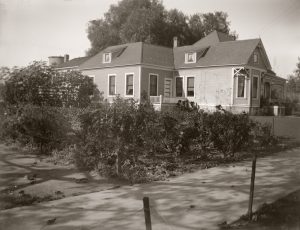
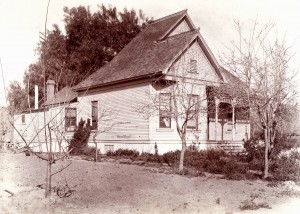
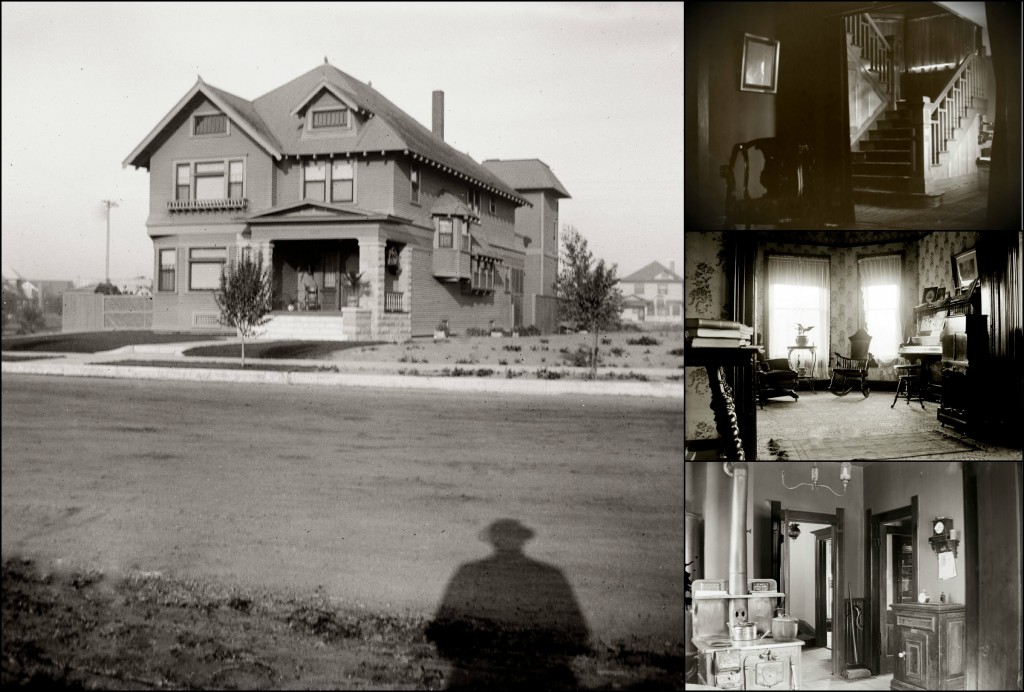
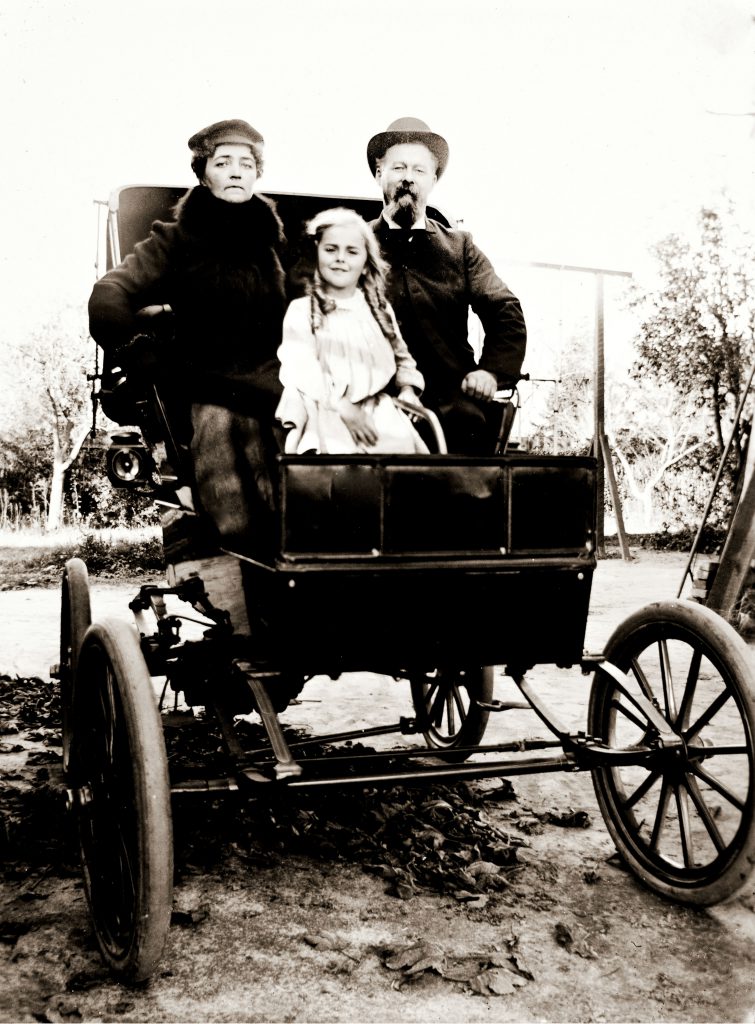
Two Touching Photographs
It was when the Alonzo Smith family lived at South Park that Charles Jeremiah Smith (Alonzo’s father and patriarch of the family) died in 1904. The family was quite saddened by his passing, especially his two young granddaughters, Rosalind and Phoebe. As a remembrance of C.J.’s passing, two very moving photographs were taken and immortalized on glass plates. For more about C.J. Smith, see Family Legacy timeline on this site, year 1837.
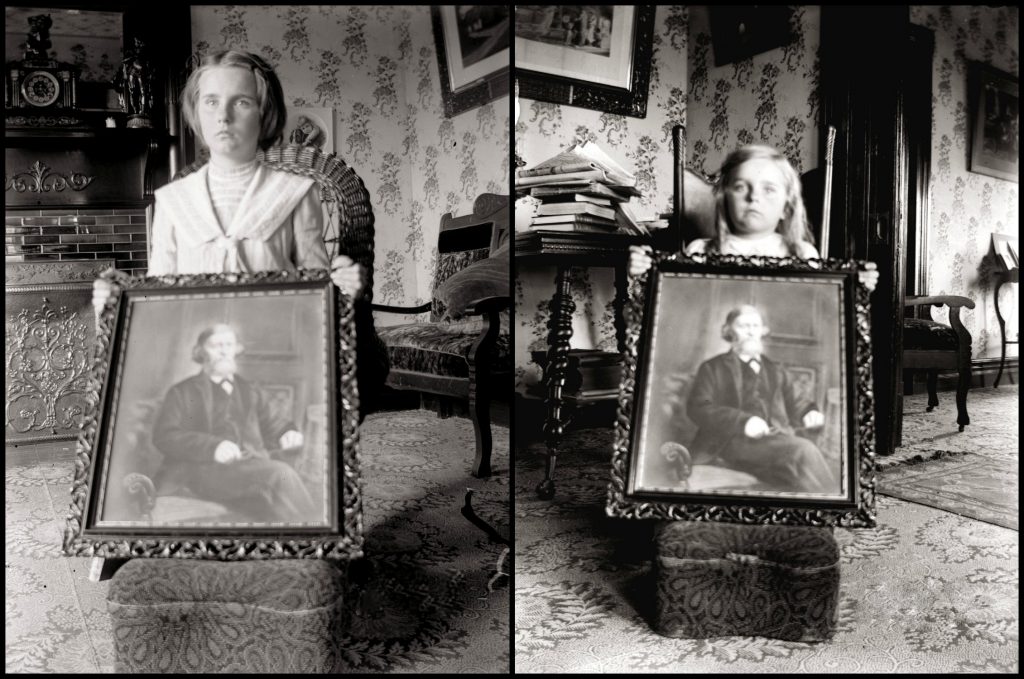
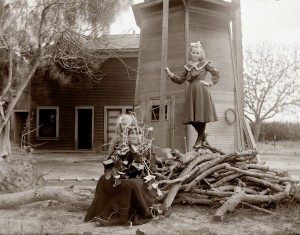
Family Life
Alonzo and Sarah’s Hill Street home was full of life. The family was quite literate so many books were available as well as magazines. The kids had pets, they laughed, played music, received visitors, and were engaged.
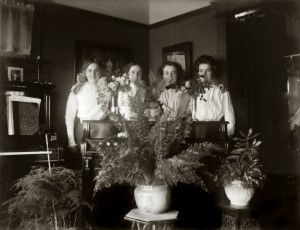
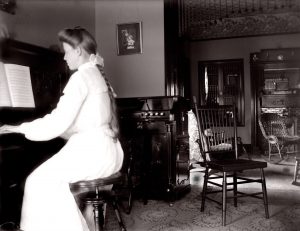
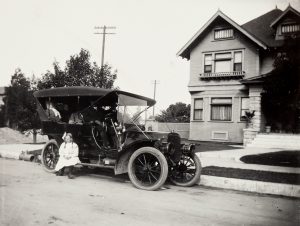
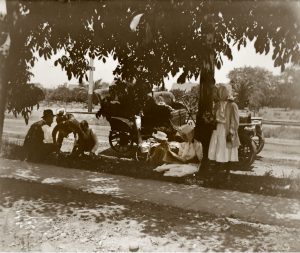
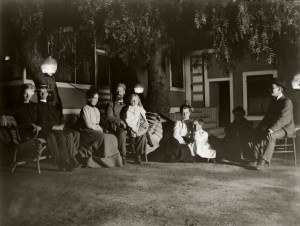
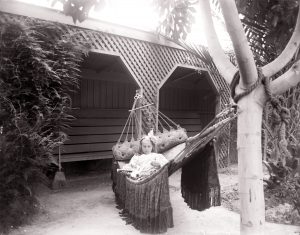
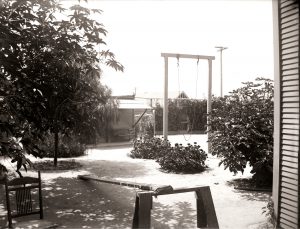
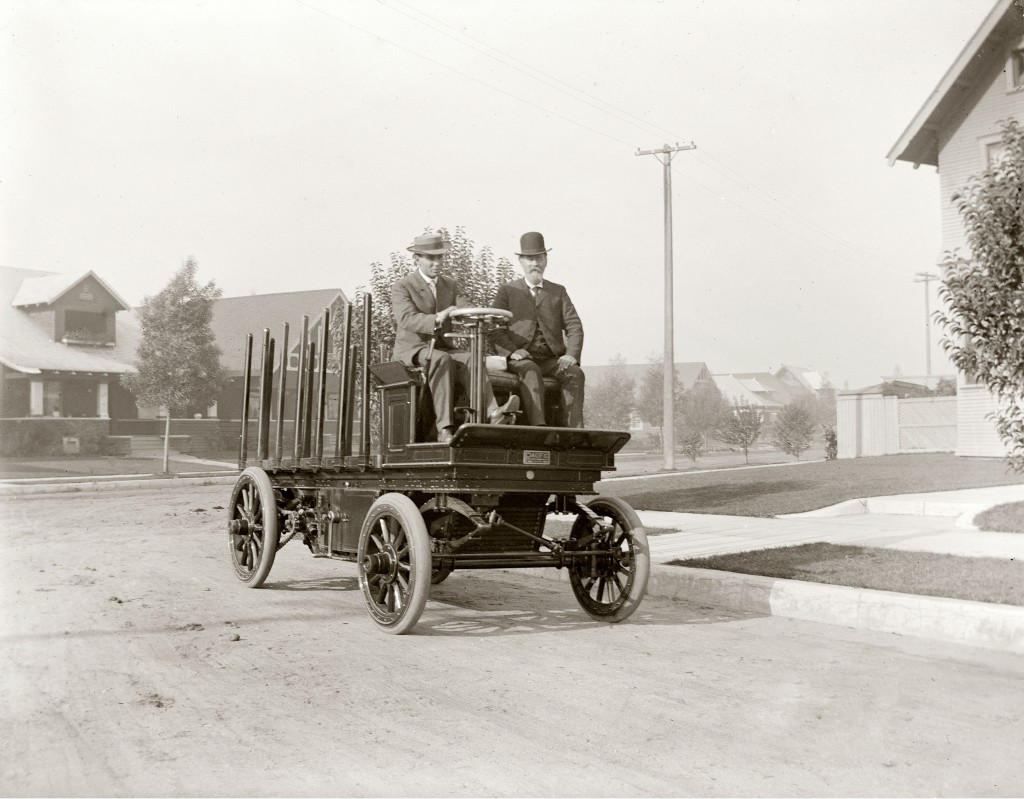
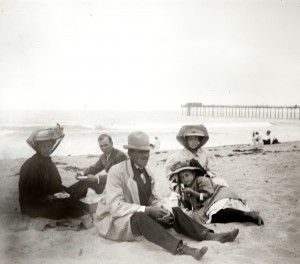
Reuben Stanley Smith Returns To Milwaukee
In 1909, Alonzo’s youngest son Reuben finished his engineering studies and left Los Angeles with Alonzo’s brother Arthur (who was visiting Alonzo at the time) to begin his career with Arthur’s company in Milwaukee, the A.O. Smith Corporation. Reuben worked for his uncle, A.O. Smith, as a young teenager when the family lived in Milwaukee. As the story goes, Arthur was impressed with Reuben’s intuitive skills and abilities with anything mechanical. Reuben built an internal combustion engine for his father’s woodshop machines and also helped Alonzo build two trucks while in Los Angeles for his father’s business. Reuben flourished while working at the A.O. Smith Corporation as the environment there presented him with some golden opportunities to do some remarkable work. That work is posted on the Smith Precision Products Company website with several articles written about the Smith Motor Wheel, Pioneering Welding Advancements, Mechanical Marvel, the Smith Meter Company, as well as the Timeline under Family Legacy.
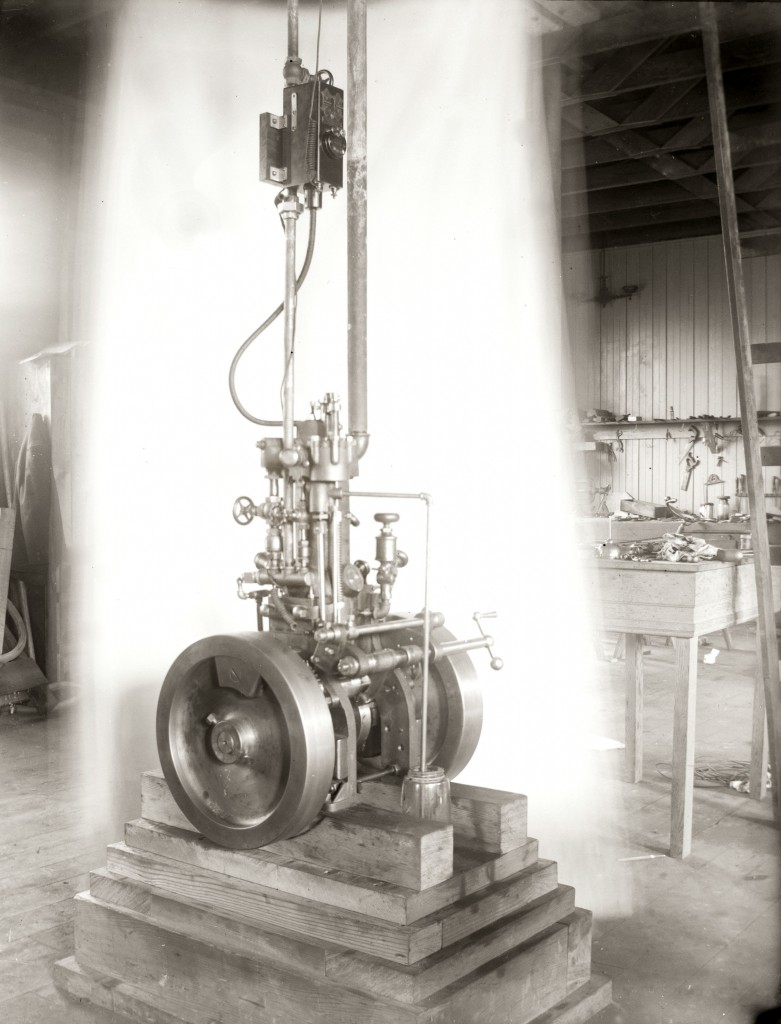
Irene and Edna Smith
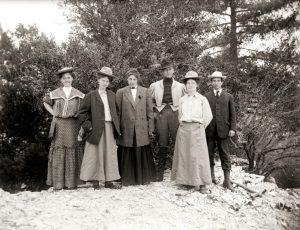
Alonzo’s oldest daughters, Irene and Edna, who are pictured on the Spelling Board postcard, circa 1892, appeared to enjoy California. They pose in many of the glass plate photographs and took many hikes with their older brothers into the mountains north of Los Angeles, many of them accompanied by their friends.Even their mother Sarah accompanied them on one of their overnight campouts in 1908.
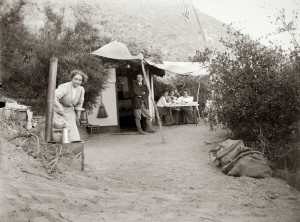
It is quite unfortunate that we do not know much about Alonzo and Sarah’s oldest daughter Irene.The last photograph of Irene was taken in 1915. This is also the last photograph of Alonzo. Irene was perhaps the most photogenic of all of Alonzo and Sarah’s children. Like her brother Elroy, she also passed away at a very young age. Around 1916, Edna married Robert Miller. Edna and Bob lived in Pasadena, California.
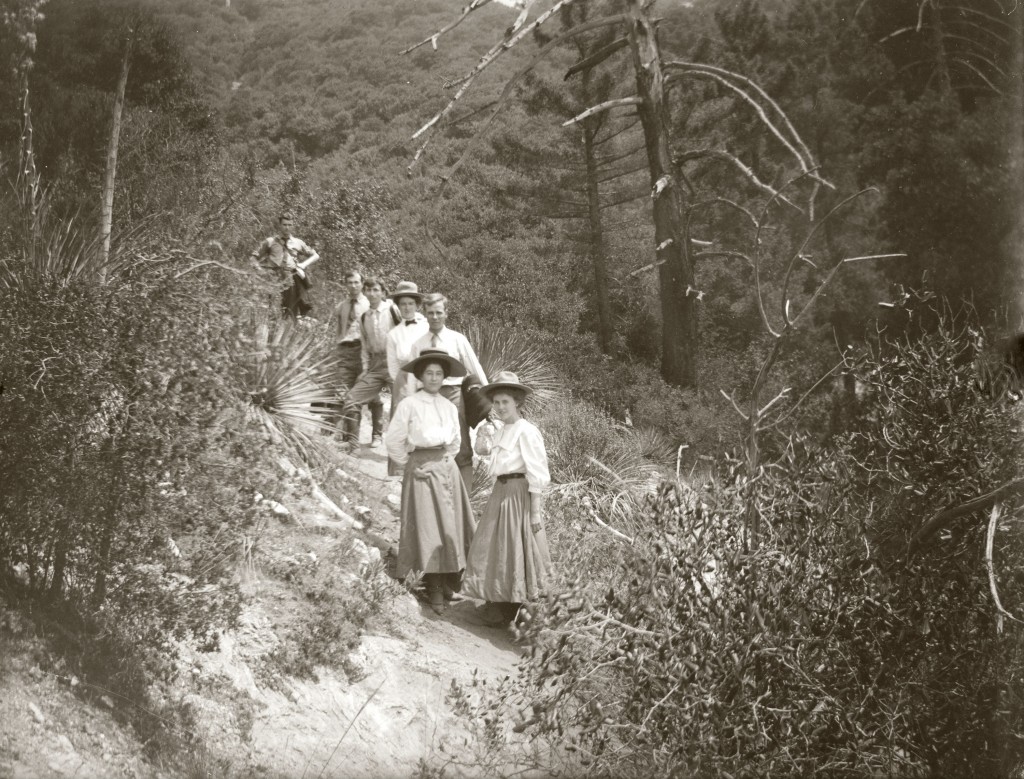
Rosalind and Phoebe Smith
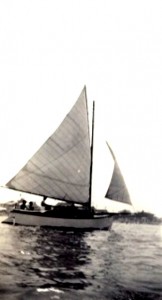
Rosalind, Alonzo and Sarah’s second youngest daughter, married Mr. Hal Colson. Hal owned a sail boat and the two spent many enjoyable days sailing the waters between Los Angeles and Catalina Island.
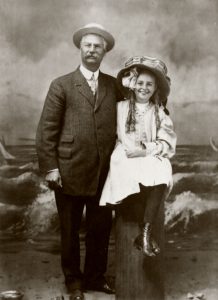
Phoebe, the youngest in the family, was also photogenic like her older sister Irene. And, many glass plate photos were taken of her as she grew up. Phoebe used to say her most favorite uncle was Arthur, Alonzo’s brother and founder of the A.O. Smith Corporation. Phoebe went off to Stanford University and obtained her degree there. She was employed by her brother Reuben’s Company, Smith Precision Products Company from about 1940 through 1962. Phoebe retired in a small community in the high Mojave Desert area of California and was later joined there by her sister Rosalind.
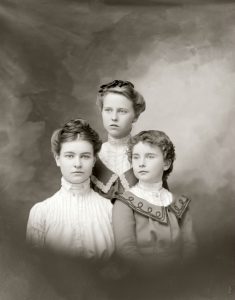
Alonzo passed away in the same year as his mother, Mercy, which was 1917. Within months of Alonzo’s passing, his oldest daughter Irene passed away. Alonzo’s wife Sarah passed away in 1929.
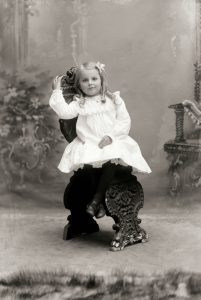
Much of the information in this article was gleaned from the glass plate negatives and other old photo albums. The glass plates capture just a moment in time but every plate was a labor of love to produce and expose. This rare glimpse into the Alonzo F. Smith family would not have been possible without them.
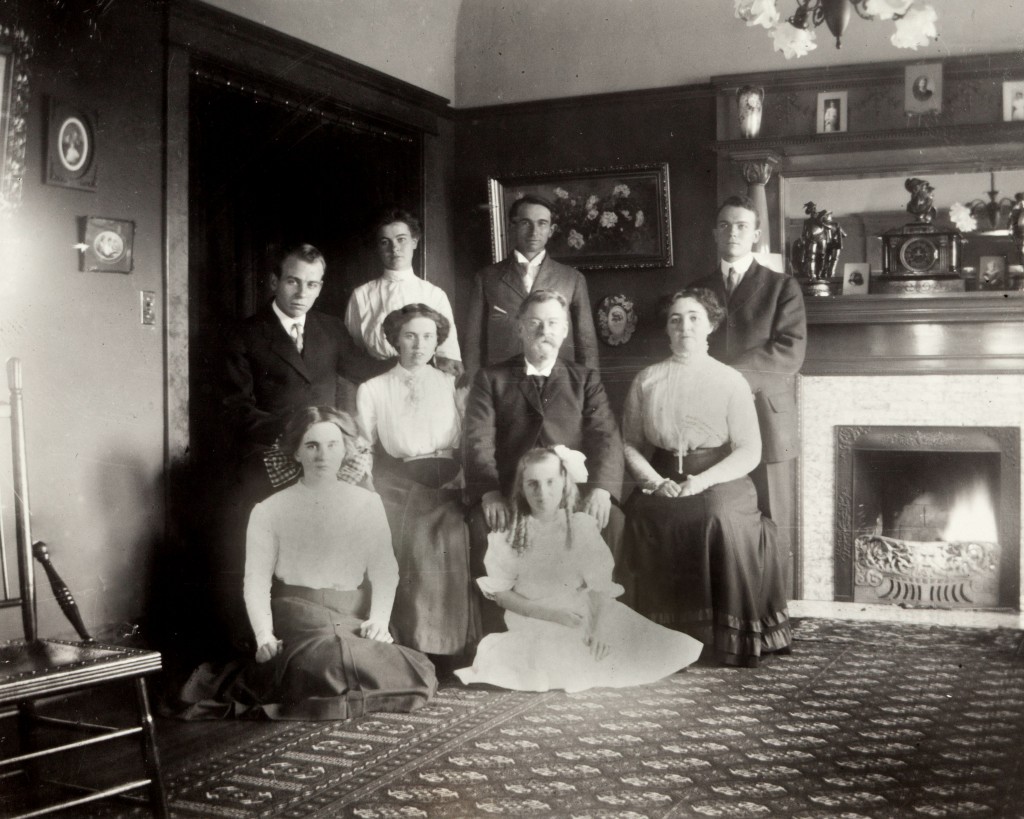
The Smith family would like to thank Jon Gordon Photography for carefully digitizing the glass plate negatives and providing the color photographs used in this article.
We would also like to thank Mr. Mark Alt for identifying the 1901 Waverly runabout horseless carriage and providing the Spelling Board Postcard.
Website article author: Walter W. Smith
Website article editor: Paulina Alfaro

